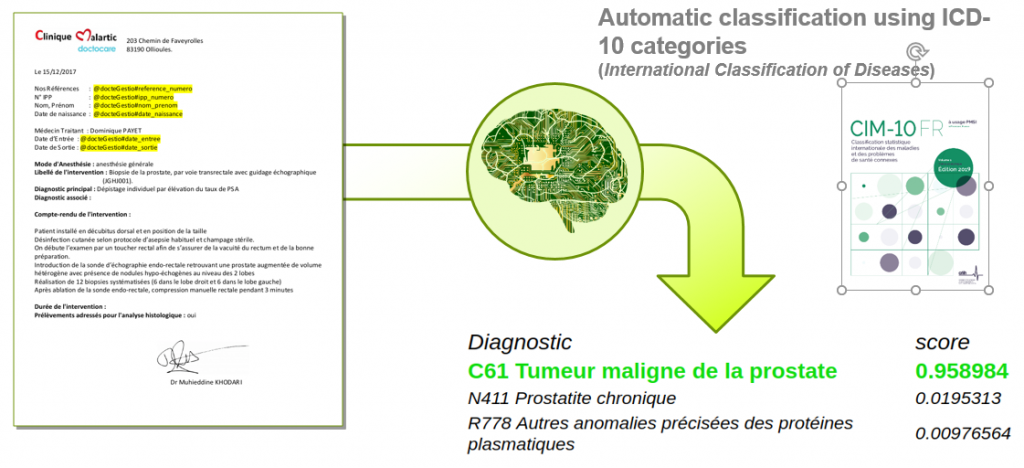AI for improving patient healthcare
Are considered as medical data, general practitioner notes, notes took during hospitalization, as well as data coming from monitoring devices or eating patterns. These data can be divided into :
CEA List teams in artificial intelligence have important expertise in the development of automatic language processing tools capable to handle documents containing free text.
From patient files to ICD-10 codes
Automatic classification of diagnostics
From an administrative point of view, every hospitalization results in a medical record inventorying all patient interactions and interventions of medical staff. Today, specialist doctors read all notes took during this stay in order to extract the codes of the interventions performed so that billing can be addressed to the Assurance Maladie.
During our first collaboration with DocteGestio, we aim to do this codification automatically. The codification is based on ICD-10 (International Classification of Diseases). Deep learning was applied on the text contained in the patient files and word embeddings were built. These vectors have been used to build a classifier who’s top-3 accuracy is 70% on an unseen data set. The demonstrator resulting from this collaboration is now being tested and validated with the IMG physicians of the DocteGestio group, in order to collect and integrate the necessary modifications to move into the industrialization phase.

Ease diseases follow-up
Structure the information contained in medical records in order to facilitate patient follow-up.
In M4P project we aim to structure the information from medical notes. By adapting LIMA and CLIMA to the field of diabetes, we are working on the extraction of parameters useful in diabetes monitoring. These parameters have been defined by our partners in the medical field and are extracted from the free text contained in the medical CRs.

Online courses and practice
Imagine new training tools by combining virtual and augmented reality with NLP chatbots
LabForSims2 project aims to develop a collaborative and immersive environment for medical students. They can use this platform and an avatar before being directly in contact with a human patient.
Two use cases have been implemented in this project:
